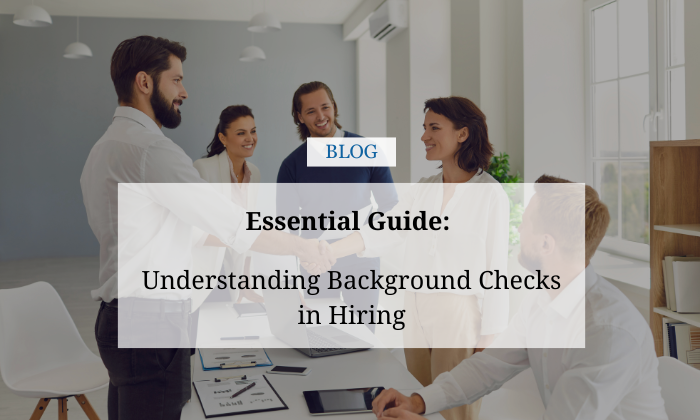Your company’s success hinges on the strength of your workforce. Achieving your business objectives requires competent and reliable employees, but assembling a top-notch team is a challenging task. According to a recent survey, 56% of individuals admitted to embellishing their resumes, particularly in areas like work experience, education, skills, and job responsibilities.
While minor inaccuracies might be overlooked in certain industries, in others, they can pose significant risks and irresponsibility. Beyond just fabrications, the omission of critical information by candidates can be equally, if not more, detrimental. For instance, someone with a history of violence may choose not to disclose it, creating a potential hazard in the workplace. This omission could lead to issues like negligent hiring lawsuits, causing lasting damage to your company’s reputation.
Taking the initiative to conduct background checks can effectively reduce these risks and elevate the overall quality of your hires.
Securecheck360
Here at Securecheck360, we’re experts in delivering reliable, fast turnaround and affordable Employment Background Screening Services, serving businesses of all sizes across the globe. Our customized solutions are finely tuned to meet the unique requirements of small, mid-sized, and large organizations. We’re dedicated to equipping companies with the vital tools and insights they need to make well-informed hiring choices. As one of the leading background verification companies, we’re committed to supporting even small businesses as trusted background check companies for small businesses to ensure they have the confidence to build the best teams for their success.
To know more about our services, book your free demo today!
Step 1: Create An Employment Background Check Policy
Crafting a background check policy is like laying down the guidelines for your screening program, ensuring a consistent application across the board. The policy should cover three key aspects:
- Types of Background Checks: Specify which background checks will be carried out and for whom. It’s advisable to implement screening throughout the organization but customize the packages based on job roles. For instance, positions dealing with finances might require credit checks, while roles involving driving could necessitate driving record checks.
- Impact on Employment Decisions: Clearly outline how background check results will influence employment decisions. Consider factors such as the nature of the position, the severity of the offense, and the time elapsed since the conviction. This approach is deemed best practice to make fair judgments.
- Timing of Background Checks: Determine when in the recruitment process background checks will take place and establish intervals for screening current employees. While federal law allows screening after obtaining the candidate’s consent, be aware of potential restrictions imposed by state and local laws.
Having a written background check policy not only ensures a fair and transparent process but also serves to prevent discrimination. It’s a proactive measure that can help you steer clear of litigation and potential enforcement actions from federal agencies.
Step 2: Compliance: Background Checks For Employment & The Law
Navigating the landscape of background checks involves a web of federal, state, and local laws. It falls on the employer to ensure compliance, as overlooking this responsibility can lead to hefty fines, settlements, and legal battles.
Keep an eye out for these potential violations:
- Consent Forms: According to the FCRA, employers must clearly inform applicants in writing about the intention to conduct a background check for employment purposes. This disclosure should be conspicuous and provided as a separate document.
- Adverse Action: The FCRA outlines a three-step process for employers planning unfavorable actions based on background check results. This involves sending a pre-adverse action notice, along with the background report and a Summary of Rights. The candidate should then be given a reasonable time (typically five business days) to respond before receiving an adverse action notice.
- Ban-the-Box: Regulations on when a background check can be initiated (usually after the first interview or a conditional offer) vary among states and municipalities. Ban-the-box laws may also impact the adverse action process, so it’s essential to be aware of and comply with applicable laws.
- Title VII: Enforced by the EEOC, Title VII of the Civil Rights Act of 1964 prohibits discrimination based on race, color, religion, sex, or national origin. Some background screening policies may inadvertently result in disproportionate adverse treatment, particularly affecting minority populations arrested at higher rates. Stay vigilant to avoid such unintended consequences.
Step 3: How To Choose A Background Check Company
Recognizing the distinct nature of each business, selecting a background check provider that aligns with your unique hiring and screening requirements is crucial. The optimal background check service for your company hinges on factors such as your hiring frequency, business scale, HR team size, budget constraints, background screening policy, and the presence of in-house legal counsel. Here are some key features to take into account:
- Built-in Compliance: Look for services that extend beyond FCRA compliance, addressing the broader spectrum of potential risks associated with unfair hiring practices. This includes safeguarding against lawsuits and penalties tied to EEOC, ban the box, and local regulations, especially crucial if your hiring spans multiple locations.
- Integrated Adverse Action Workflows: Simplify compliance by opting for services with integrated, localized adverse action workflows. These systems can alert you precisely when to dispatch pre-adverse and final adverse action notices.
- Individualized Assessments: Mitigate scrutiny from the EEOC by choosing a service equipped to signal when individualized assessments are recommended or required.
- Flexible Packages: Tailor your background check approach to your industry, position types, and county specifics. This not only prevents over-screening of candidates but also streamlines processing times.
- A Positive Candidate Experience: Opt for services that offer mobile-friendly workflows and digital consent, ensuring a quick and hassle-free initiation of checks. Provide transparency to candidates, allowing them to log in and track their background check status and report from any device.
- Integrations: Streamline your workflows by selecting services that seamlessly integrate with your Applicant Tracking System (ATS), reducing the need for manual processes.
Step 4: What Are The Different Types Of Background Checks?
It’s essential to familiarize yourself with the various background checks and their contents so that you have a clear understanding of what to anticipate. This knowledge is crucial for making well-informed hiring decisions, especially considering the specific needs of your industry and the roles you’re looking to fill. Here’s a breakdown of some key background checks and their implications:
- Criminal Record Checks: These encompass national, state, federal, and county criminal checks, revealing felony and misdemeanor convictions and ongoing court cases. Charges, even if dismissed within seven years, might be reported. Employers utilize criminal record checks to gauge whether a candidate might pose a threat or create an unsafe work environment.
- Civil Court Checks: County and federal civil court checks shed light on non-criminal suits, claims, and judgments where the candidate is involved. This includes matters like small claims, restraining orders, civil rights violations, and bankruptcies—especially relevant for positions with financial or management responsibilities.
- Credit Checks: Employment credit reports unveil a candidate’s complete credit history, excluding the credit score. This includes payment history, civil judgments, tax liens, bankruptcies, and outstanding bills. Some positions may require a review of credit history, especially if financial responsibilities are a key aspect of the role.
- Driving Record Checks: Motor vehicle reports confirm license validity and provide insight into a candidate’s driving history, including DUIs, suspensions, and traffic violations. This is vital for roles involving the operation of vehicles for business purposes.
- Drug Screening: Drug tests offer evidence of recent use of specific prescription and illicit drugs, contributing to a safer and more productive workplace.
- Employment Verification: Validate a candidate’s employment history and job-related experiences to ensure accuracy, sufficiency, and validity of past titles, achievements, or responsibilities.
- Education Verification: Verify school attendance dates, majors, and earned degrees, diplomas, or certificates to mitigate the risk of hiring candidates with false credentials.
- Healthcare Sanctions Checks: For healthcare professionals, an OIG search and healthcare sanctions background check provide insights into medical backgrounds, including penalties, suspensions, or disciplinary actions, ensuring compliance with federal regulations.
- International Background Checks: Different types of international background checks can offer records of international criminal activities, education credentials, and employment history for candidates with a global background. This is particularly relevant for individuals who have lived, worked, or studied in other countries.
Step 5: What Do You Communicate To The Candidate?
Maintaining transparent communication with candidates regarding your background check procedures is key to setting expectations. Be forthright about the reasons behind the background check, fostering a culture of openness. Assure candidates that they are welcome to review their background check results, challenge any inaccuracies, and provide written comments or engage in a conversation with you to clarify any alerts.
Candidates are protected by rights outlined in the FCRA, as detailed in the document titled “A Summary of Your Rights.” When employing a background check provider for screening, it is imperative to:
- Inform the candidate about the intent to conduct a background check and clarify that the results may impact the hiring decision.
- Obtain the candidate’s written consent for employment screening through a background check company.
- If the background check results prompt consideration of not hiring the candidate, issue a pre-adverse action notice. This notice should include a copy of the background check results, the candidate’s rights under the FCRA, and the contact information for the background screening company. Allow a reasonable time (typically five business days) for the candidate to dispute any inaccuracies before sending a final adverse action notice in writing if the decision is not to hire.
Additionally, the EEOC recommends taking individual circumstances and context into account when assessing a candidate’s criminal record. Factors such as the nature and seriousness of the offense, the time elapsed since the incident, and its relevance to the job sought should be considered. Providing an individualized assessment allows candidates to offer additional insights into the offense, giving them an opportunity to explain their perspective.
Conclusion
As we strive to build effective and ethical hiring practices, integrating comprehensive background checks is not just a compliance requirement; it is a commitment to creating a safe, inclusive, and informed workplace. The journey to finding the right fit for our teams involves diligence, empathy, and a dedication to fostering an environment where both employers and candidates thrive.







